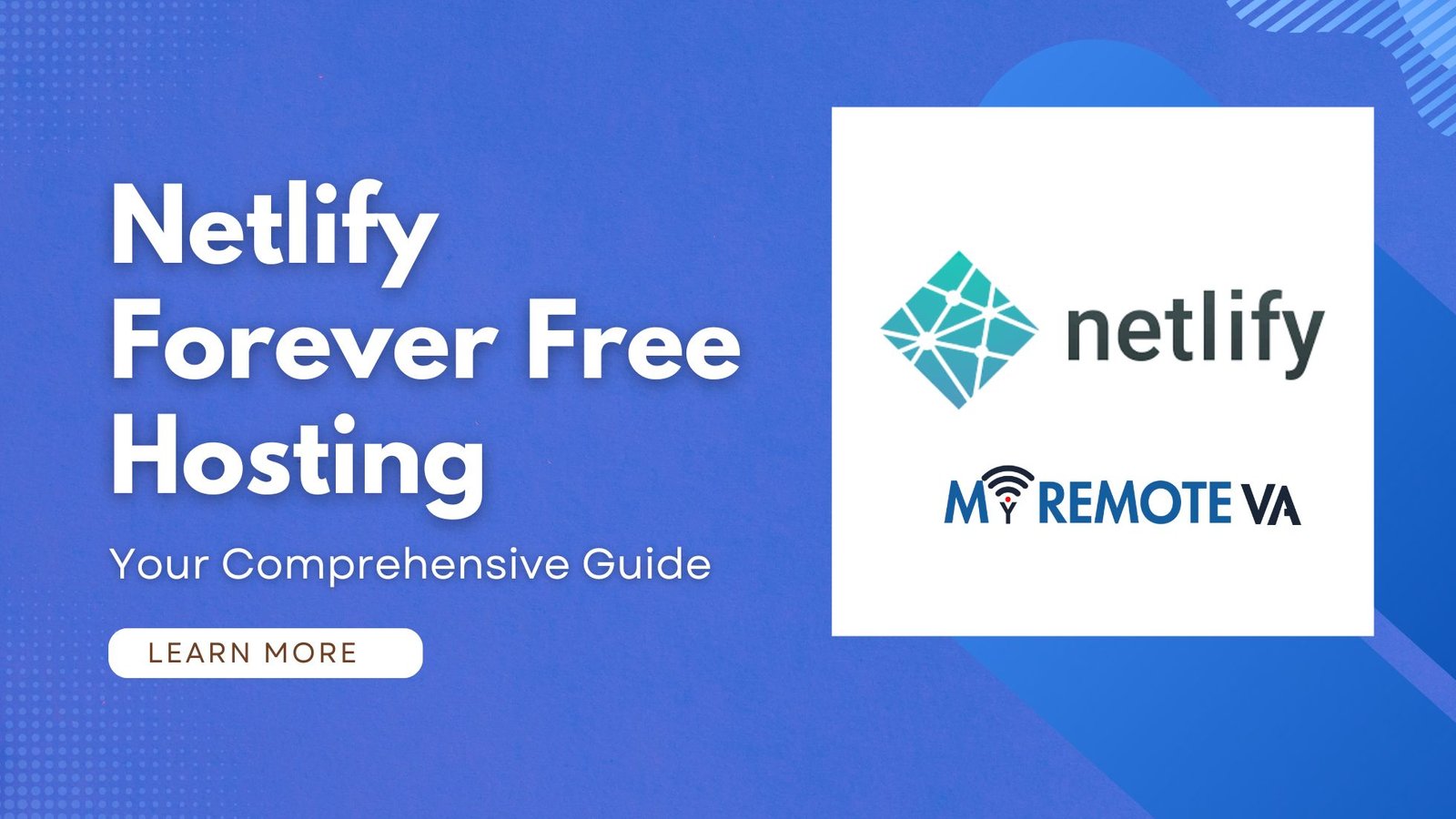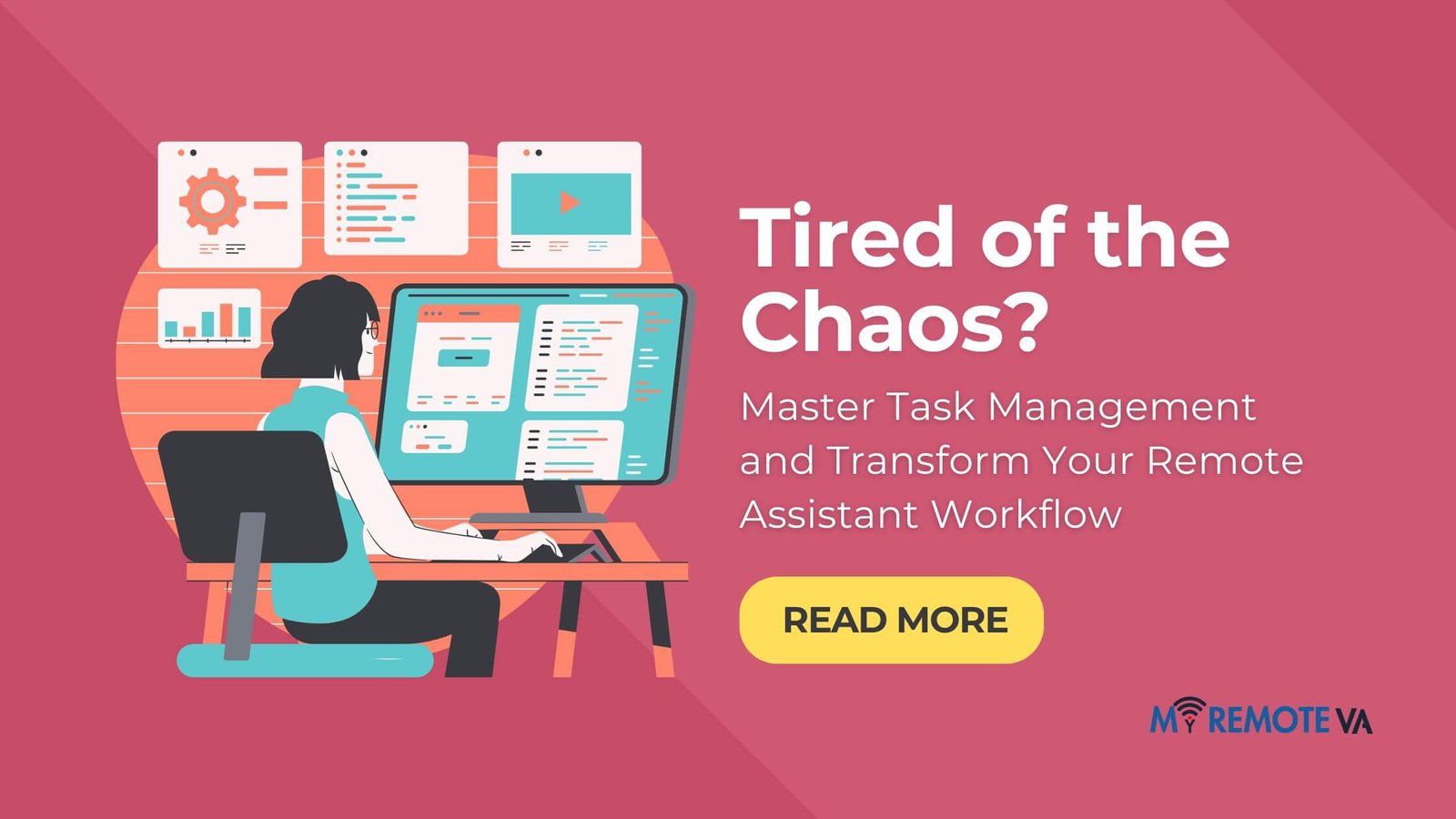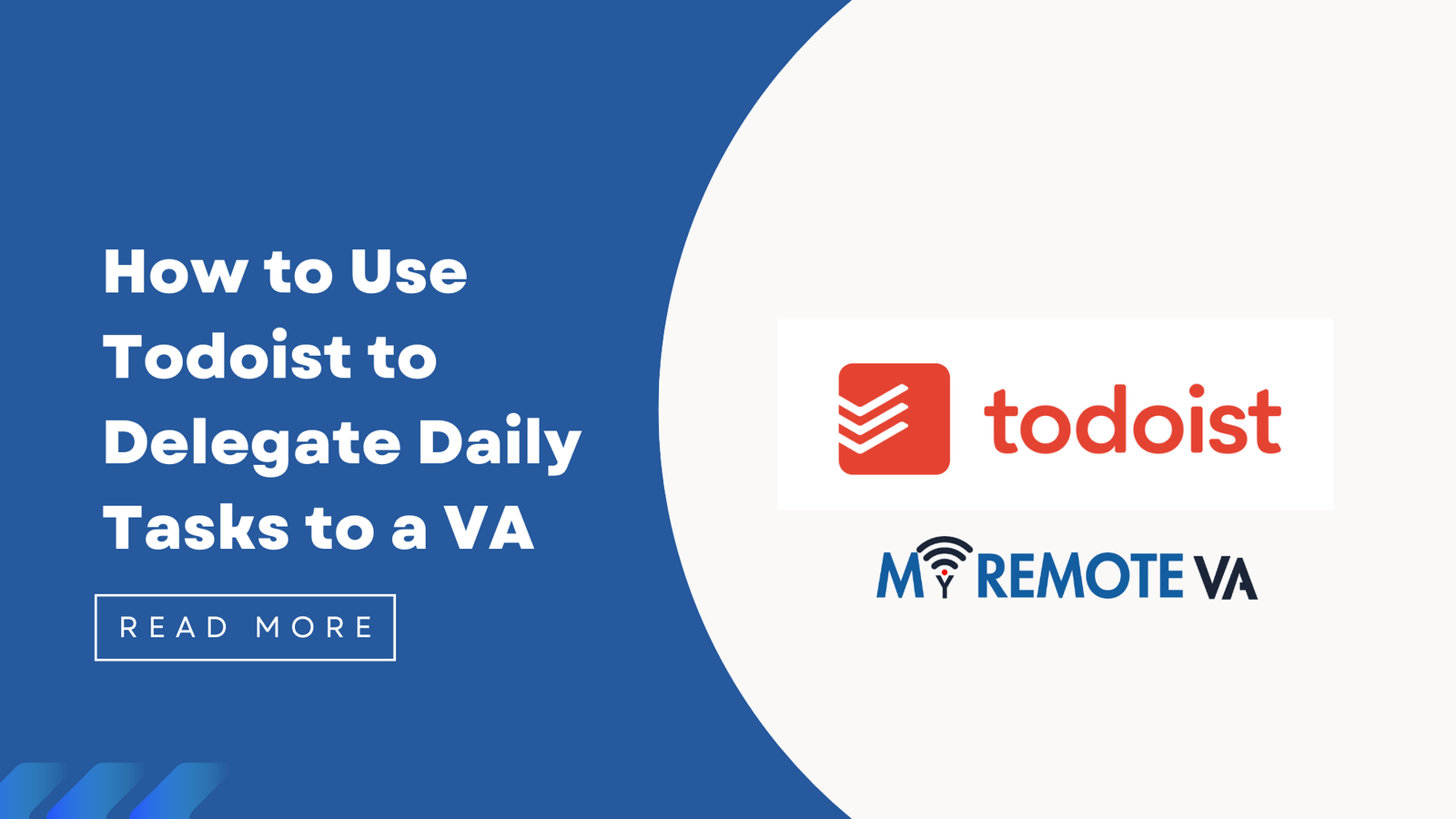Hire a Remote Assistant: Unlock Efficiency & Scale Your Business
Are you feeling overwhelmed by daily tasks and struggling to focus on your core business goals? Hiring a remote assistant can be the key to unlocking efficiency and scaling your business. Delegating tasks allows you to reclaim your time, reduce stress, and focus on strategic initiatives that drive growth.
- Hire a Remote Assistant: Unlock Efficiency & Scale Your Business
- Why Hire a Remote Assistant?
- Services Offered by Remote Assistants
- Finding the Right Remote Assistant: A Step-by-Step Guide
- Remote Assistant Hiring Trends & Market Insights (USA, UK, NZ, SG, AU, UAE - Last Month)
- Cost of Hiring a Remote Assistant
- Benefits of Using Our Virtual Assistant Services
- Getting Started: Hire Your Remote Assistant Today!
- FAQ: Frequently Asked Questions About Hiring Remote Assistants
- What Tasks Can a Remote Assistant Handle?
- How much does it cost to hire a remote assistant?
- How do I ensure effective communication with my remote assistant?
- How do I protect sensitive data when working with a remote assistant?
- What Happens If My Remote Assistant Doesn't Meet My Expectations?
Benefits of Hiring a Remote Assistant
- Increased Productivity: Offload time-consuming tasks and free up your schedule for more important work.
- Cost-Effectiveness: Access skilled support without the overhead costs of hiring a full-time employee.
- Scalability: Easily adjust your level of support as your business needs evolve.
- Access to Expertise: Tap into a diverse pool of talent with specialized skills.
Remote assistants can handle a wide range of tasks, including:
- Administrative support
- Technical tasks
- Customer support
- Marketing and content creation
- Creative projects
- Executive assistance
Finding the Right Remote Assistant
Finding a reliable and skilled remote assistant is crucial for success. Carefully consider your specific needs and identify the skills and experience that are most important to you. Look for a provider that offers:
- A thorough screening and matching process
- A dedicated supervisor to manage the assistant’s work
- Flexible plans to suit your budget and requirements
- Clear communication and reporting
Explore different plan options, such as curated hourly monthly plans or dedicated plans for a set number of hours per month. Some providers even offer a free trial or introductory plan to allow you to test their services before committing to a larger investment.
By strategically hiring a remote assistant, you can significantly improve your productivity, reduce costs, and accelerate the growth of your business.
Why Hire a Remote Assistant?
In today’s fast-paced business environment, time is your most valuable asset. Hiring a remote assistant can free you from the burden of time-consuming tasks, allowing you to focus on strategic growth and core business activities. Delegating tasks like administrative duties, customer support, or even marketing activities can significantly boost your productivity and efficiency.
Benefits of Hiring a Remote Assistant
- Increased Productivity: Reclaim your time and focus on high-impact tasks by delegating routine and time-consuming duties.
- Reduced Costs: Save on overhead costs associated with traditional employees, such as office space, equipment, and benefits.
- Access to Expertise: Tap into a global talent pool and find assistants with specialized skills to support your specific needs. For example, you can find assistants with expertise in tech, marketing, creative tasks or executive level work.
- Flexibility and Scalability: Adjust your level of support as needed, scaling up or down based on your current workload and business demands. Whether it’s a short-term project or ongoing support, a remote assistant provides the flexibility you need.
- Improved Work-Life Balance: Free up your personal time by outsourcing tasks and achieving a better balance between work and life.
Whether you’re a startup founder, a busy professional, or an established agency, a remote assistant can provide the support you need to thrive. Many remote assistant services offer flexible hourly and team-based plans to meet various needs and budgets. You can choose from curated hourly monthly plans, or build a dedicated team for even more comprehensive support.
Services Offered by Remote Assistants
When you hire a remote assistant, you gain access to a wide range of skills and support that can free up your time and boost your productivity. Remote assistants can handle tasks across various departments, allowing you to focus on your core business objectives.
Administrative Support
Delegate your time-consuming administrative tasks to a remote assistant. This can include managing your calendar, scheduling appointments, handling email correspondence, data entry, and creating presentations. Free yourself from these routine activities and reclaim your workday.
Technical Assistance
Remote assistants can provide technical support, depending on their skill set. This might involve website maintenance, troubleshooting software issues, managing your social media presence, or assisting with basic IT tasks.
Customer Support
Improve your customer service by hiring a remote assistant to handle customer inquiries, provide support through various channels (email, chat, phone), and resolve customer issues. A dedicated remote assistant can ensure your customers receive timely and helpful assistance.
Marketing & Creative Tasks
Expand your marketing efforts with the help of a remote assistant. They can assist with content creation (blog posts, social media updates), social media management, email marketing campaigns, graphic design, and market research. Offload these tasks to free up your marketing team for more strategic initiatives.
Executive Assistance
An executive remote assistant can provide high-level support to executives and managers. This can include managing travel arrangements, preparing reports, conducting research, handling confidential information, and acting as a liaison between different departments.
Many services offer flexible plans to accommodate different needs. Some offer curated hourly monthly plans, such as 5, 10, 20, or 30 hours per month. Others provide dedicated plans for 80 or 160 hours per month, or even multi-VA setups for larger workloads. Some even offer a “forever free” plan of 1 free hour every month. This flexibility allows you to scale your support as your business grows.
Finding the Right Remote Assistant: A Step-by-Step Guide
Hiring a remote assistant can significantly boost your productivity and free up your time to focus on core business activities. But finding the *right* remote assistant is crucial for success. This guide breaks down the process into manageable steps.
1. Define Your Needs and Expectations
Before you start your search, clearly define what tasks you need assistance with. What are your biggest time-wasters? What skills are essential for this role? Be as specific as possible. For example, instead of saying “marketing support,” specify “social media management, including content creation and community engagement on platforms X and Y.” Are you looking for help with admin, tech, customer support, marketing, creative tasks or executive work?
Consider the time commitment required. Do you need a few hours per week, or a full-time assistant? This will influence the type of plan you need.
2. Determine the Required Skillset
Once you’ve defined your needs, identify the specific skills and experience required to perform those tasks effectively. Do you need someone with expertise in:
- Administrative tasks (scheduling, email management, data entry)
- Technical skills (website maintenance, software support)
- Customer support (handling inquiries, resolving issues)
- Marketing (social media, content creation, email marketing)
- Creative tasks (graphic design, video editing)
- Executive support (research, presentation preparation)
Be realistic about the level of expertise required. A highly specialized task may require a more experienced (and potentially more expensive) assistant.
3. Establish a Clear Communication Plan
Remote work thrives on clear and consistent communication. Outline how you will communicate with your assistant – email, phone calls, video conferencing, project management software? Establish expectations for response times and availability.
4. Onboarding and Training
Even the most skilled remote assistant will need some onboarding and training specific to your business and processes. Prepare documentation, training materials, and a system for answering questions and providing feedback. Initial investment in onboarding will pay dividends in the long run.
5. Ongoing Management and Evaluation
Don’t simply delegate tasks and disappear. Regularly check in with your assistant, provide feedback on their performance, and address any concerns. Schedule regular meetings to discuss progress, challenges, and upcoming priorities. Consistent feedback will lead to continuous improvement and a stronger working relationship. Consider using a project management system to track progress and ensure accountability.
By following these steps, you can increase your chances of finding a remote assistant who is a valuable asset to your business.
Remote Assistant Hiring Trends & Market Insights (USA, UK, NZ, SG, AU, UAE – Last Month)
The demand for remote assistants continues to surge across the USA, UK, New Zealand, Singapore, Australia, and the UAE. Last month saw a noticeable uptick in businesses seeking virtual support to optimize operations and reduce costs. This trend reflects a broader shift towards remote work and the increasing recognition of the value that virtual assistants bring to diverse industries.
Key Drivers of Growth
Several factors are contributing to the increased demand:
- Cost-Effectiveness: Businesses are realizing significant cost savings by hiring remote assistants compared to traditional in-office employees. This is especially true for startups and small businesses.
- Access to Global Talent: Remote hiring expands the talent pool, allowing businesses to access skilled professionals from around the world.
- Flexibility and Scalability: Virtual assistant services offer flexibility to scale support up or down based on fluctuating business needs.
- Focus on Core Competencies: Delegating administrative, technical, or creative tasks to virtual assistants allows businesses to focus on their core competencies and strategic initiatives.
Popular Tasks Delegated to Remote Assistants
Companies are increasingly outsourcing a wide range of tasks to remote assistants. These often include:
- Administrative Support: Calendar management, email correspondence, data entry, and travel arrangements.
- Customer Support: Handling customer inquiries, resolving issues, and providing excellent customer service.
- Marketing Assistance: Social media management, content creation, email marketing, and SEO support.
- Technical Tasks: Website maintenance, data analysis, and basic IT support.
- Creative Tasks: Graphic design, video editing, and content writing.
Regional Variations
While the overall trend is positive, there are some regional nuances. In the USA and UK, the demand for specialized virtual assistants with expertise in areas like marketing and technology is particularly high. Australia, New Zealand, Singapore, and the UAE are seeing increased adoption of virtual assistants for administrative and customer support roles. The common factor across these regions is the need for flexible, cost-effective solutions to address business challenges.
Cost of Hiring a Remote Assistant
Understanding the costs associated with hiring a remote assistant is crucial for budgeting and determining the return on investment. The pricing models vary significantly, offering options for different needs and scales. Generally, you’ll find these common pricing structures:
- Hourly Plans: These plans offer flexibility and are suitable for tasks with fluctuating workloads. You pay for the hours the assistant actually works.
- Monthly Plans: These are usually structured with a fixed number of hours per month, offering a predictable cost. Typically, there are different tiers of hours available (e.g., 5, 10, 20, 30 hours).
- Dedicated Plans: These plans offer dedicated virtual assistants for a set number of hours per week. These are ideal if you need a full-time or part-time assistant and require consistent support. Plans are structured by hours per month (e.g., 80 hours, 160 hours).
Several factors influence the overall cost of hiring a remote assistant:
- Skillset and Experience: More specialized skills (e.g., graphic design, technical support) typically command higher rates.
- Location: The assistant’s location can impact pricing, as cost of living varies globally.
- Plan Type: As mentioned earlier, Hourly, Monthly, and Dedicated Plans have different associated costs.
- Level of Management and Support: Some services include dedicated supervisors that manage your VA, processes, and reporting, which can add to the overall cost but reduces your administrative burden.
What to Consider When Evaluating Costs
When comparing the costs of different remote assistant services, consider the following:
- Hidden Fees: Clarify whether there are any setup fees, software costs, or other hidden charges.
- Rollover Hours: Determine if unused hours can be rolled over to the next month. This is especially helpful for monthly plans.
- Contract Terms: Understand the cancellation policy and any long-term commitment requirements.
- Onboarding Support: What level of support is provided to ensure the assistant is properly trained and integrated into your workflow?
By carefully evaluating these factors, you can make an informed decision and choose a remote assistant solution that aligns with your budget and business needs.
Benefits of Using Our Virtual Assistant Services
Hiring a remote assistant can significantly boost your productivity and free up your time to focus on what truly matters. Our virtual assistant services offer a range of advantages designed to support startups, founders, agencies, and busy professionals.
Increased Productivity and Efficiency
Delegate time-consuming tasks like administrative work, technical support, customer service, marketing activities, creative projects, or even executive assistance. By offloading these responsibilities to a skilled virtual assistant, you can concentrate on strategic initiatives and revenue-generating activities.
Cost-Effective Solution
Instead of hiring a full-time employee, you only pay for the hours your virtual assistant works. This eliminates the costs associated with salaries, benefits, office space, and equipment. Our flexible hourly and team-based plans allow you to choose a solution that fits your budget and specific needs.
Flexible and Scalable Support
We understand that your needs may change over time. That’s why we offer curated Hourly Monthly Plans (5, 10, 20, 30 hours) and Dedicated Plans (80 hours, 160 hours, or multi-VA setups). You can easily scale your virtual assistant support up or down as your business evolves.
Dedicated Supervisor for Seamless Management
Our unique approach includes a Dedicated Supervisor who manages your VA, shift, processes, and reporting. This ensures consistent quality, efficient task execution, and clear communication. You don’t have to worry about micromanaging your virtual assistant; our supervisors handle the day-to-day oversight.
Access to a Diverse Skill Set
Our virtual assistants possess a wide range of skills and expertise. Whether you need help with administrative tasks, social media management, customer support, or technical projects, we can connect you with a qualified professional who has the right skills for the job.
Try Before You Commit
Not sure if a virtual assistant is right for you? Start with our Forever Free Plan, which gives you 1 free hour every month with task support and rollover benefits. This allows you to experience the benefits of virtual assistance firsthand before making a commitment.
Getting Started: Hire Your Remote Assistant Today!
Ready to reclaim your time and focus on what truly matters? Hiring a remote assistant can be the key to unlocking productivity and achieving your business goals. Our flexible and expert virtual assistant services are designed to support startups, founders, agencies, and busy professionals like you.
How It Works
We offer curated Hourly Monthly Plans allowing you to delegate a wide range of tasks, including:
- Admin Support
- Technical Tasks
- Customer Support
- Marketing Assistance
- Creative Projects
- Executive Assistance
Flexible Plans to Fit Your Needs
Choose the plan that best suits your requirements:
- Hourly Monthly Plans: Select from 5, 10, 20, or 30 hours per month, ideal for task-based support.
- Dedicated Plans: Build a team with 80 or 160 hours per month. Perfect for ongoing, consistent support.
- Forever Free Plan: Get started with 1 free hour per month to experience the benefits of a virtual assistant. Unused hours roll over.
No matter which plan you choose, a Dedicated Supervisor manages your VA, shift, processes, and reporting, ensuring seamless integration and optimal performance. This means you can delegate with confidence, knowing that your tasks are in capable hands.
FAQ: Frequently Asked Questions About Hiring Remote Assistants
Considering hiring a remote assistant? It’s a big decision! Here are some frequently asked questions to help you decide if it’s the right move for you and your business.
What tasks can a remote assistant handle?
The possibilities are vast! Remote assistants can handle a wide array of tasks, depending on their skillset and your needs. This can range from administrative duties like scheduling appointments and managing emails to more specialized tasks like customer support, marketing activities, and even technical assistance. Think about what consistently takes up your time and prevents you from focusing on core business functions. That’s a good starting point for determining what to delegate.
What are the benefits of hiring a remote assistant?
Hiring a remote assistant can offer numerous benefits:
- Increased Productivity: By delegating tasks, you free up your time to focus on strategic initiatives and revenue-generating activities.
- Cost Savings: Remote assistants often cost less than hiring a full-time employee, as you avoid expenses like benefits, office space, and equipment.
- Flexibility and Scalability: You can easily scale your support up or down based on your needs, paying only for the hours you use.
- Access to Specialized Skills: You can find assistants with specific skills tailored to your business requirements.
How do I choose the right remote assistant?
Careful selection is key. Consider these factors:
- Clearly Define Your Needs: Outline the tasks you want to delegate and the skills required.
- Assess Experience and Skills: Review resumes and portfolios to ensure candidates have the necessary qualifications.
- Check References: Speak with previous clients to get insights into their work ethic and performance.
- Communicate Clearly: Establish clear expectations and communication protocols from the outset.
How much does it cost to hire a remote assistant?
The cost varies depending on the assistant’s location, experience, skills, and the type of service model you choose. Some services offer hourly plans, giving you flexibility to pay only for the time you need. These plans may be curated into different tiers, such as 5, 10, 20, or 30 hours monthly, allowing you to select a plan that fits your budget and workload. Other services may offer dedicated plans, providing a consistent assistant for a set number of hours per week, such as 80 or 160 hours. Some providers even offer multi-VA setups for more comprehensive support.
How do I manage a remote assistant effectively?
Effective communication and clear processes are essential for successful remote collaboration:
- Establish Clear Communication Channels: Utilize tools like email, instant messaging, and video conferencing for regular communication.
- Set Clear Expectations and Deadlines: Provide detailed instructions and deadlines for each task.
- Provide Regular Feedback: Offer constructive feedback to help the assistant improve and stay aligned with your goals.
- Use Project Management Tools: Utilize tools like Trello, Asana, or Monday.com to track progress and manage tasks effectively.
What Tasks Can a Remote Assistant Handle?
Hiring a remote assistant opens up a world of possibilities for streamlining your workload and focusing on what truly matters. The specific tasks a virtual assistant can handle are incredibly diverse and adaptable to your unique needs. Think of it as extending your team with skilled support across various areas.
Administrative Support
Free yourself from the burden of everyday administrative tasks. A remote assistant can manage your calendar, schedule appointments, book travel arrangements, handle email correspondence, and organize your files.
Technical Assistance
Don’t let technical glitches slow you down. Remote assistants can provide tech support, troubleshoot software issues, manage your website content, and even handle basic coding tasks.
Customer Support
Ensure your customers receive timely and helpful assistance. A virtual assistant can manage your customer inquiries via email, chat, or phone, resolve issues, and provide product information.
Marketing Support
Boost your marketing efforts with a dedicated virtual assistant. They can manage your social media accounts, create content, run email marketing campaigns, and conduct market research.
Creative Tasks
Unlock your creative potential by delegating design and content creation tasks. A virtual assistant can create graphics, edit videos, write blog posts, and design presentations.
Executive Assistance
Elevate your productivity with executive-level support. A virtual assistant can prepare reports, manage projects, conduct research, and handle confidential information.
By delegating these tasks to a remote assistant, you can reclaim your time, reduce stress, and focus on growing your business or pursuing your personal goals. This frees up your time to focus on higher-level strategic tasks, increasing your overall productivity and success.
How much does it cost to hire a remote assistant?
The cost of hiring a remote assistant can vary widely depending on several factors, including the level of experience, the type of tasks you need assistance with, and the pricing model offered by the virtual assistant service provider. Many services offer flexible plans tailored to different needs and budgets.
Understanding Different Pricing Models
Virtual assistant services commonly offer a range of pricing structures. Understanding these will help you choose the most cost-effective option for your specific requirements.
- Hourly Plans: These plans allow you to purchase a set number of hours per month. You pay only for the time your assistant actually works. This can be a great option if your needs fluctuate or you’re unsure of the exact amount of support you require. Examples include packages of 5, 10, 20, or 30 hours monthly.
- Dedicated Plans: Ideal for businesses with consistent and substantial workloads, dedicated plans provide a full-time or near-full-time virtual assistant. These plans typically involve a fixed monthly rate for a specified number of hours, such as 80 or 160 hours. This model often benefits from a Dedicated Supervisor managing the VA.
- Team-Based Plans: For businesses requiring specialized skills across multiple domains, team-based plans offer access to a team of virtual assistants with different expertise.
- Free Plans: Some providers offer a limited free plan to allow you to test their services. This often includes a small number of free hours per month.
Factors Influencing the Cost
The following aspects will affect the total investment in hiring a remote assistant:
- Assistant’s Skill Set and Experience: Assistants with specialized skills or more extensive experience generally command higher rates.
- Complexity of Tasks: Simple administrative tasks will typically cost less than complex marketing, technical, or executive-level work.
- Location: Although location is not a cost, the assistant’s location will determine the cost.
- Plan Type: Hourly plans offer great flexibility and are good for fluctuating workloads, while dedicated plans are better suited for constant workloads and more complex tasks.
How do I ensure effective communication with my remote assistant?
Effective communication is crucial for a successful working relationship with your remote assistant. Clear communication ensures tasks are understood, deadlines are met, and your VA feels like a valuable part of your team.
Establishing Communication Channels
Choose communication channels that work best for you and your assistant. Options include:
- Email: Ideal for non-urgent updates, detailed instructions, and file sharing.
- Instant Messaging (e.g., Slack, Microsoft Teams): Perfect for quick questions, real-time collaboration, and daily check-ins.
- Video Conferencing (e.g., Zoom, Google Meet): Essential for onboarding, complex discussions, and building rapport.
- Project Management Tools (e.g., Asana, Trello): Useful for task assignment, progress tracking, and collaborative project management.
Setting Clear Expectations
From the outset, clearly define your expectations regarding communication frequency, response times, and preferred communication styles. For example:
- “I expect a daily update on the progress of tasks by [Time] each day.”
- “Please respond to urgent messages within [Timeframe].”
- “I prefer video calls for discussing new projects.”
Documenting Processes and Providing Feedback
Document your standard operating procedures (SOPs) to ensure consistency and clarity. Provide regular feedback – both positive and constructive – to help your assistant improve their performance. Consider:
- Creating a shared document library with FAQs and common procedures.
- Holding regular performance reviews to discuss progress and address any challenges.
- Providing specific examples when giving feedback to illustrate areas for improvement.
Utilizing Project Management Tools
Project management tools enhance collaboration, task tracking, and communication. Features like task assignment, deadlines, and progress updates keep everyone on the same page.
By prioritizing clear communication, you can build a strong, productive partnership with your remote assistant, allowing you to delegate tasks effectively and focus on your core business activities.
How do I protect sensitive data when working with a remote assistant?
Entrusting sensitive data to a remote assistant requires careful planning and robust security measures. While the benefits of hiring a remote assistant are numerous, including increased efficiency and cost savings, safeguarding confidential information is paramount.
Implement Strong Security Protocols
Begin by establishing clear security protocols. This includes:
- Data Encryption: Ensure all data, both in transit and at rest, is encrypted using industry-standard encryption algorithms.
- Secure Communication Channels: Utilize secure communication channels, such as encrypted email and messaging platforms, to transmit sensitive information.
- Password Management: Enforce strong password policies and multi-factor authentication for all accounts. Regularly update passwords and avoid sharing them.
- Access Control: Implement strict access controls, granting the remote assistant access only to the data and systems they need to perform their specific tasks.
Background Checks and NDAs
Before hiring, conduct thorough background checks to verify the assistant’s identity and trustworthiness. Have them sign a legally binding Non-Disclosure Agreement (NDA) to protect your confidential information.
Regular Monitoring and Audits
Monitor the remote assistant’s activities regularly and conduct periodic security audits to identify potential vulnerabilities. This includes reviewing access logs, tracking data usage, and ensuring compliance with established security policies.
Data Minimization
Practice data minimization by only providing the remote assistant with the minimum amount of data necessary to complete their tasks. Avoid sharing unnecessary sensitive information.
Secure Data Storage and Disposal
Establish secure data storage procedures and ensure the remote assistant is aware of and adheres to them. This includes using secure cloud storage services with appropriate security settings and implementing a secure data disposal process to permanently erase sensitive information when it is no longer needed.
Training and Awareness
Provide the remote assistant with comprehensive training on data security best practices and your company’s security policies. Foster a culture of security awareness and encourage them to report any potential security incidents promptly.
What Happens If My Remote Assistant Doesn’t Meet My Expectations?
Hiring a remote assistant is an investment, and it’s natural to be concerned about whether they’ll live up to your expectations. We understand that a good fit is crucial for a successful partnership.
Addressing Performance Concerns
If your remote assistant’s performance isn’t meeting your needs, the first step is to communicate your concerns clearly. Open and honest feedback is vital for improvement.
Our commitment is to provide expert virtual assistant support. That’s why we may assign a Dedicated Supervisor who manages your VA, shift, processes, and reporting. This Supervisor oversees the quality of work and helps address any issues that arise.
Possible Solutions
Depending on the nature of the issue, several solutions can be implemented:
- Additional Training: The assistant may benefit from specific training to improve their skills in a particular area.
- Task Clarification: Ensure the tasks are clearly defined and understood. Sometimes, a lack of clarity can lead to misunderstandings and suboptimal performance.
- Process Refinement: The processes for task execution might need to be adjusted to better align with your workflow.
- Assistant Replacement: In some cases, despite best efforts, a different assistant might be a better fit. We are ready to work with you to make sure the right assistant is matched up to the role.
We offer flexible hourly and team-based plans. For example, with our curated Hourly Monthly Plans, we can tailor support to your needs. And our Dedicated Plans allow for 80-hour or 160-hour options. No matter your plan, we strive to deliver quality results.














